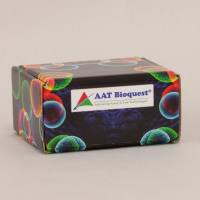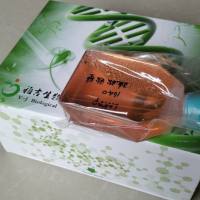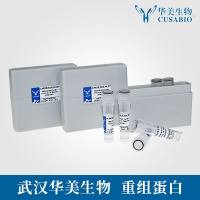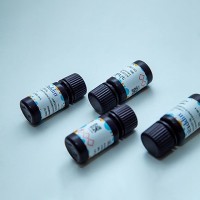Preparation of single-stranded probes from cloned cDNA
互联网
<center> <p> <font>Preparation of single-stranded probes from cloned cDNA</font></p> </center> <center> <p> <font>(from Patel and Goodman, 1992)</font></p> </center>
a) 2-5 µg of plasmid DNA containing the cDNA insert is linearized using an appropriate restriction enzyme. For antisense probes, a unique restriction site 5' to the insert is used. This digested DNA will be amplified using an antisense primer at the 3' end of the insert. For sense (control) probes, a unique restriction site 3' to the insert is used. This digested DNA will be amplified using a sense primer at the 5' end of the insert. (Inserts of up to 2kb are labeled efficiently).
b) Add 4X STOP to digested DNA to a final concentration of 1X STOP.
Extract once with phenol/chloroform, once with chloroform, and precipitate with 3 volumes of 100% EtOH.
Resuspend in TE at a final concentration of 100-200 µg/ml. (check concentration on a gel).
c) Mix the following reagents in 0.5 ml eppendorf tube.
water 7.0 µl
10x Taq Buffer 2.5 µl
25 mM MgCl2 1.5 µl
10 x DIG-labeled dNTP mix 5.0 µl
Primer * (30 ng/µl) 5.0 µl
Digested DNA (100-200 µg/ml) 2.0 µl
mineral oil 40 µl
"T3 long " = 5'- ACT AAA GGG AAC AAA AGC TGG -3'
"T7 long " = 5'- ACT CAC TAT AGG GCG AAT TGG -3'
d. Boil reagents for 5 min, place on ice, before adding 2.0 µl of a 1:8 dilution in water of 5 units/µl Taq polymerase stock (1.25 units total).
e. Incubate labelling reaction for 35 thermal cycles as follows:
95°C for 45 seconds
55°C for 30 seconds (lower temperature for primers less than 20nt)
72°C for 1 minute
f. 75 µl of H20 is added to the reaction below the oil and 90 - 95 µl of the diluted reaction is transferred to a new tube.
g. 10 µl of 1M NaCl, 10 µg of glycogen, and 3 vols of 100% EtOH are added to the diluted reaction. After 30 min at -70°C, the reaction is centrifuged at 15,000 rpm for 10 min. The pellet is washed in 70% ethanol, dried, and resuspended in 300 µl of hybridization buffer.
h. The probe is boiled for 1-2 hours. This step reduces the length of the probe for efficient penetration of embryos.
e. Probe production is assayed using the following protocol. 1 µl of probe in hybridization buffer is mixed with 5 µl of 5 x SSC, boiled for 5 min, and cooled on ice. 1 µl of this mixture is spotted on a nitrocellulose strip. Several dilutions of a pre-labelled control DNA (1ng to 1pg / µl; Boeringher Mannheim) are also spotted for comparison. The strip is baked for 30 min in a vacuum oven at 80oC, washed once in 2 x SSC, twice in PBT, and blocked for 30 minutes in PBT. The strip is then incubated for 30-60 min with AP-anti-DIG antibody diluted 1:2000 in PBT. After three 10 min washes in PBT, and two 5 min washes in staining solution, the strip is developed in staining solution containing 4.5 µl NBT/ml, 3.5 µl X-phosphate/ml. Spots should be visible within minutes. Spot intensities of the probe and control dilutions are compared to determine the concentration of the probe.
f. Probes can be stored at -20oC in hybridization buffer for several weeks.







